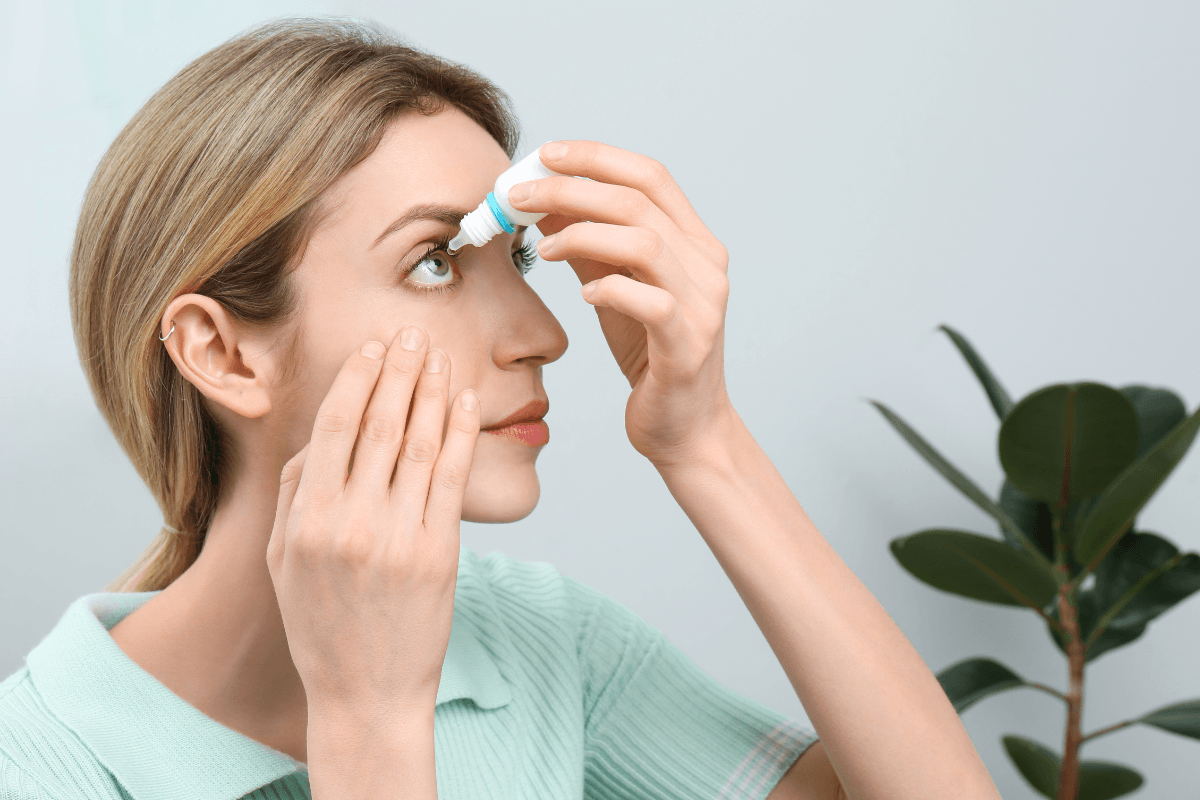Key Takeaways
- Pressure control: helps lower eye pressure in glaucoma care.
- Not instant relief: it manages pressure, not symptoms.
- Technique matters: clean dosing habits can reduce irritation.
- Side effects vary: many are mild and temporary.
- Follow-up is key: eye exams track pressure and nerve health.
When eye pressure rises, it can quietly affect vision over time. Many people look up Azopt eye drops uses because they want clarity, not hype. It also helps to know what’s normal, and what deserves a call.
You’ll learn what the medicine is, how it lowers pressure, and how to use drops more comfortably. You’ll also see how it compares with similar options. The goal is calmer, more confident day-to-day care.
Azopt eye drops uses in glaucoma and ocular hypertension
These drops are prescribed to lower intraocular pressure (IOP), meaning pressure inside the eye. Lowering IOP matters because higher pressure can raise the risk of optic nerve damage in some people. Azopt is commonly used for open-angle glaucoma and ocular hypertension (pressure that is higher than desired without clear nerve damage).
It can be used alone or alongside other pressure-lowering drops. Many people take more than one eye medication, because glaucoma care often needs a tailored approach. Your clinician chooses a plan based on pressure targets, optic nerve findings, and how you tolerate drops.
It also helps to set expectations. These drops are meant to manage pressure over time, not to “feel” like they’re working right away. You may not notice a day-to-day symptom change, even if IOP improves. That’s why scheduled eye checks remain important.
If cost or insurance barriers are part of the story, it can be validating to understand why prices vary. For background on common pricing factors, read Why Is Azopt So Expensive for context on brand, supply, and coverage differences.
What Azopt Is and How It Works in the Eye
If you’re asking what is azopt, it’s a prescription eye drop that contains brinzolamide. Brinzolamide is a carbonic anhydrase inhibitor, meaning it reduces an enzyme activity that influences fluid production in the eye. With less fluid (aqueous humor) being made, eye pressure may go down.
Because the target is pressure, the benefits are usually measured in the clinic. Your eye specialist checks IOP and also watches the optic nerve for change. For a plain-language overview of glaucoma and why pressure matters, the AAO glaucoma overview gives a helpful big-picture explanation.
Azopt is not a steroid drop. Steroid eye drops are used for inflammation and can sometimes raise eye pressure in certain people. Brinzolamide works through a different pathway and is used for pressure control.
Why this matters: knowing the “why” can make follow-through easier. If drops sting or blur vision briefly, it can help to remember the goal is long-term nerve protection, not immediate comfort.
Understanding the Azopt Eye Drops Generic and Label Terms
Many prescriptions are written by the active ingredient, not the brand. The azopt eye drops generic name is brinzolamide ophthalmic suspension. “Ophthalmic” means it’s formulated for the eye, and “suspension” means the medicine is mixed in liquid rather than fully dissolved.
Suspensions often need a gentle shake before each use, because the medication can settle. Your pharmacy label may also list a concentration, such as 1%. That number reflects how much drug is in the liquid, not how “strong” it will feel in your eye.
Different manufacturers can use slightly different inactive ingredients. Those ingredients may affect how the drop feels, or how it comes out of the bottle. If a new bottle seems different, it doesn’t automatically mean anything is wrong, but it is worth mentioning at your next visit.
For a medication-focused reference that explains brinzolamide in general terms, see the MedlinePlus brinzolamide page alongside your clinician’s directions.
Getting the Most From Prescribed Use and Azopt Eye Drops Dosage Directions
People often focus on timing and technique, because both can affect comfort and consistency. Your azopt eye drops dosage directions should be followed exactly as written by the prescriber. Many regimens use a steady daily schedule, but instructions can differ depending on your other drops and your pressure goal.
Technique also matters, especially with suspensions. Wash your hands first, and avoid letting the bottle tip touch your eye or lashes. After the drop lands, closing the eye gently can reduce drainage into the nose and throat. Some clinicians also suggest light pressure at the inner corner of the eye, which may limit systemic absorption.
Tip: If you use several drops, spacing them out helps. A practical rule is to separate different eye medications by a few minutes, so one doesn’t rinse out the other. Your eye care team can tell you the best order for your specific regimen.
If you’re reviewing product information to match your prescription label, you can see Azopt Product Details for packaging and formulation notes that may help you double-check what you have.
Side Effects: What Can Be Common vs. What Needs a Call
Many pressure-lowering drops can cause brief stinging, mild redness, or temporary blurred vision after dosing. With brinzolamide products, some people notice a bitter taste in the mouth. That usually happens when a small amount drains through the tear duct into the throat.
Dryness or a “gritty” feeling can also happen, especially if you use several drops daily. Preservatives and frequent dosing can contribute. If eye discomfort builds over weeks, it’s reasonable to ask whether a different schedule, a different bottle, or supportive dry-eye care could help.
Note: Seek prompt medical care for severe eye pain, sudden vision change, or signs of an allergic reaction. Those situations are not typical and should be assessed quickly. If you have milder concerns, writing down what you feel and when it happens can make the next appointment more productive.
When side effects drive comparisons, it can help to look at other commonly used drop families. For example, Latanoprost Eye Drops are often discussed as a different class option, and comparing classes may clarify what your clinician is aiming for.
Precautions, Interactions, and Situations to Discuss Early
It’s important to share your full medication list, including other eye drops. Some combinations are routine in glaucoma care, but clinicians still watch for additive effects and tolerability. If you take an oral carbonic anhydrase inhibitor for another reason, your prescriber may want to review that overlap.
Kidney problems and certain electrolyte issues can matter for this drug class. Brinzolamide is related to sulfonamides, so people with a history of severe sulfonamide reactions should discuss that history carefully with their prescriber. This doesn’t mean everyone with a “sulfa” label cannot use it, but it does mean the risk-benefit discussion should be explicit.
Contact lenses are another practical point. Many eye drops contain preservatives that can be absorbed by soft lenses. Many clinicians recommend removing lenses before dosing and waiting before reinserting them, based on the product labeling and your eye surface health.
If you’re organizing care for multiple eye conditions, browsing Ophthalmology Options can help you recognize the main medication categories your clinician might mention.
Comparing Options: Brinzolamide vs Dorzolamide and Combination Drops
When people compare similar medicines, the goal is usually fewer side effects, simpler routines, or better pressure control. Brinzolamide vs dorzolamide comparisons come up because both are topical carbonic anhydrase inhibitors that lower eye pressure. They are related but not identical, and they may feel different in the eye for some people.
One practical difference is formulation. Brinzolamide is a suspension, while dorzolamide products are commonly solutions. That can affect how the drop feels, how it needs to be handled, and sometimes how well it fits into a multi-drop schedule.
| Feature | Brinzolamide (Azopt) | Dorzolamide |
|---|---|---|
| Drug class | Carbonic anhydrase inhibitor | Carbonic anhydrase inhibitor |
| Form | Suspension (often shaken gently) | Solution (typically no shaking) |
| Why people compare | Tolerance, routine fit, bottle feel | Tolerance, routine fit, bottle feel |
| Common pairing | May be combined with other drop classes | May be combined with other drop classes |
If you’re weighing a similar medicine in the same class, Dorzolamide Ophthalmic Solution can be a useful reference point for ingredients and labeling differences. The “best” option depends on your eyes and your full regimen.
Some people are prescribed combination drops to simplify routines. These products combine two medications in one bottle, which can reduce the number of daily administrations. If you’re considering that approach because of schedule strain or adherence challenges, Dorzolamide Timolol Solution is one example to discuss with your clinician.
Other drop classes are also common in glaucoma care, including beta-blockers and prostaglandin analogs. If you’re learning the vocabulary your clinician uses, seeing Timolol Eye Drops as a beta-blocker example can make medication conversations easier to follow.
Monitoring and Follow-Up: What Your Visits May Include
Because glaucoma can progress quietly, monitoring is part of treatment. Eye pressure checks are only one piece. Many visits also include optic nerve assessment, retinal imaging (such as OCT scans), and visual field testing to look for functional change.
It’s normal for clinicians to adjust the plan over time. That can mean adding a second drop, changing timing, or addressing eye surface irritation so you can stay consistent. Bringing your bottles to appointments, or keeping a medication list in your phone, can prevent mix-ups.
Other health conditions can also shape eye care priorities. Diabetes, for example, can affect the retina in ways unrelated to glaucoma. For an accessible overview, Diabetic Retinopathy Basics explains what screening looks like and why it matters.
If you’d like broader context on eye conditions and treatments, Ophthalmology Topics can support better questions at your next appointment.
Recap
Azopt is used to lower eye pressure, usually for glaucoma care. The benefits are tracked through eye exams, not day-to-day sensations. Good technique can improve comfort and reduce contamination risk.
Side effects are often manageable, but new or severe symptoms deserve prompt assessment. If you’re comparing similar medicines, the main differences often involve formulation, tolerability, and how a regimen fits your life. For personal decisions about changes, your prescribing clinician is the right partner.
This content is for informational purposes only and is not a substitute for professional medical advice for your personal situation.

